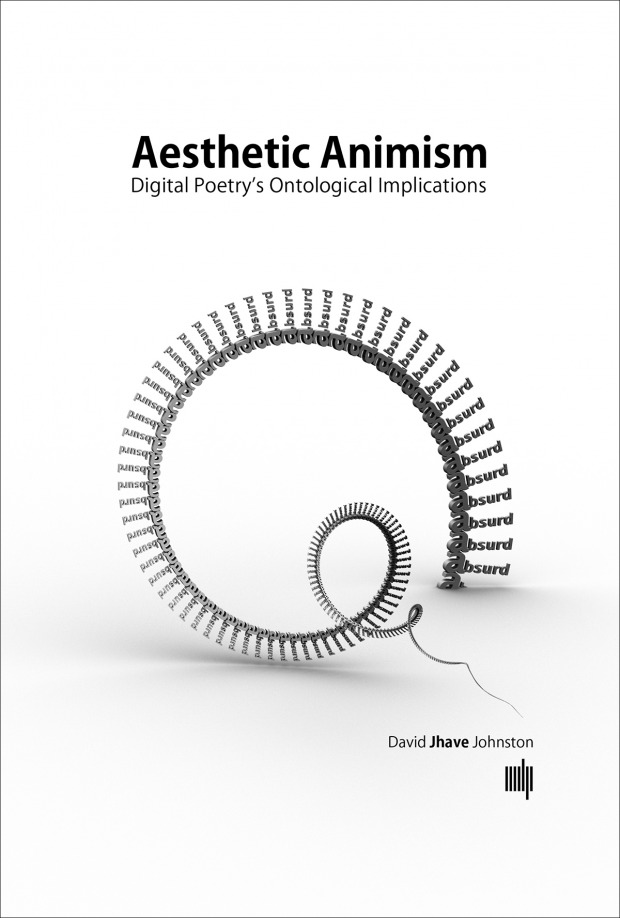Aesthetic Animism: Digital Poetry's Ontological Implications
This book offers a decoder for some of the new forms of poetry enabled by digital technology. Examining many of the strange technological vectors converging on language, it proposes a poetics appropriate to the digital era while connecting digital poetry to traditional poetry’s concerns with being (a.k.a. ontological implications). Digital poetry, in this context, is not simply a descendent of the book. Digital poems are not necessarily “poems” or written by “poets”; they are found in ads, conceptual art, interactive displays, performative projects, games, or apps. Poetic tools include algorithms, browsers, social media, and data. Code blossoms into poetic objects and poetic proto-organisms. Introducing the terms TAVs (Textual-Audio-Visuals) and TAVITS (Textual-Audio-Visual-Interactive), Aesthetic Animism theorizes a relation between scientific method and literary analysis; considers the temporal implications of animation software; and links software studies to creative writing. Above all it introduces many examples of digital poetry within a playful yet considered flexible taxonomy. In the future imagined here, digital poets program, sculpt, and nourish immense immersive interfaces of semi-autonomous word ecosystems. Poetry, enhanced by code and animated by sensors, reengages themes active at the origin of poetry: animism, agency, consciousness. Digital poetry will be perceived as living, because it is living. (Source: The MIT Press)
Consider this book a semipopulist decoder for some of the new forms of poetry emerging. (2016: 1)
Works referenced:
|
Title |
Author | Year |
|---|---|---|
| Text Rain | Romy Achituv, Camille Utterback | 1999 |
Critical writing referenced:
|
Title |
Author | Year |
|---|---|---|
| Meta/Data: A Digital Poetics | Mark Amerika | 2007 |


